Are you considering a caracal as a pet? Caracals are not safe pets due to their wild instincts, potential for aggression, and specialized care requirements. PETS.EDU.VN emphasizes the importance of responsible pet ownership, and that includes understanding the unique needs and potential risks associated with exotic animals. Discover safer, domesticated alternatives for a fulfilling pet ownership experience. Choosing a domesticated breed ensures a loving and manageable companion, prioritizing both your safety and the animal’s well-being.
1. What is a Caracal? Unveiling the Desert Lynx
The caracal, scientifically known as Caracal caracal, is a wild cat species native to Africa, Central Asia, India, and the Middle East. While sometimes referred to as the “desert lynx,” it is not a true lynx, though the resemblance is striking. They are admired for their unique beauty but misunderstood when considered as domestic companions. The caracal’s wild nature is a result of evolutionary development within the Felidae family that cannot be reversed with domestication.
1.1 Caracal Subspecies: A Glimpse into Geographic Diversity
The caracal family contains three subspecies, each inhabiting diverse regions:
- Southern Caracal (C. c. caracal): Thriving in South and East Africa.
- Northern Caracal (C. c. nubicus): Inhabiting North and West Africa.
- Asiatic Caracal (C. c. schmitzi): Found across Central Asia, India, and the Middle East.
1.2 Caracal Appearance: A Blend of Elegance and Power
Caracals are characterized by:
- Long Legs: Enabling agility and impressive leaping abilities.
- Short, Tan/Sandy Coat: Providing camouflage in their natural habitats.
- Large, Tufted Ears: These iconic black ear tufts give them a distinctive, alert look.
- Size: Significantly larger than most domestic cats, weighing between 20 to 40 pounds.
Alt text: A captivating close-up of a caracal, showcasing its striking black ear tufts against its sandy coat.
2. Why Caracals are Unsuitable as Pets: Debunking the Myth
While the allure of owning an exotic animal like a caracal is understandable, wildlife experts and responsible pet advocates strongly advise against it. Despite occasional breeders and social media portrayals, caracals are not suitable pets. PETS.EDU.VN is committed to helping potential pet owners make informed, responsible decisions.
2.1 Wild Instincts: The Untamed Nature of Caracals
Caracals retain their wild instincts, even when raised in captivity. These instincts can manifest as:
- Unpredictability: Sudden changes in behavior that can be dangerous.
- Aggression: Potential for attacks on humans, especially children, and other pets. According to a report by ABC News, exotic cat attacks, including those by caracals, can result in serious injuries requiring hospitalization.
2.2 Territorial and Destructive Behaviors: Challenges of Caracal Ownership
Caracals exhibit behaviors that are challenging to manage in a domestic setting:
- Territoriality: Strong need to defend their space, leading to aggression.
- Messiness: Behaviors like scratching, urine spraying, and open defecation can cause significant damage and hygiene issues.
2.3 Veterinary Care: Limited Access to Specialized Treatment
Finding veterinary care for a caracal can be difficult:
- Limited Availability: Many veterinarians lack experience with exotic cats.
- High Costs: Specialized care from a wild animal veterinarian can be expensive and require travel.
2.4 Dietary Needs: The Complexity of Feeding a Wild Carnivore
Caracals have specific dietary needs that are difficult and costly to meet:
- Carnivorous Diet: Requiring specialized, possibly raw, meat diets.
- Natural Prey: In the wild, they hunt birds, rodents, and small antelopes, which is impossible to replicate in a domestic setting.
2.5 Ethical Considerations: The Well-being of Caracals in Captivity
Keeping caracals as pets raises ethical concerns:
- Natural Habitat: Caracals are happiest and healthiest in their natural environment.
- Instinctual Needs: They cannot fully express their natural behaviors in a human environment.
Alt text: A caracal lounges in a grassy field, highlighting its natural habitat and the importance of living in such environments.
3. Exploring the Cat Family: Understanding Caracal’s Place
To fully understand why caracals are unsuitable as pets, it’s helpful to explore their place within the cat family (Felidae). The Felidae family is divided into two subfamilies: Pantherinae (big cats) and Felinae (smaller cats). PETS.EDU.VN provides resources that help cat lovers to better understand the unique qualities of all members of the Felidae family.
3.1 Pantherinae vs. Felinae: Roaring vs. Purring
- Pantherinae: Includes lions, tigers, jaguars, and leopards. These cats can roar (except for the snow leopard) due to their flexible hyoid bone.
- Felinae: Includes caracals, domestic cats, cheetahs, and cougars. These cats can purr but cannot roar due to their bony hyoids.
3.2 Felinae Family: A Diverse Group of Wild and Domestic Cats
The Felinae subfamily includes a wide range of species, highlighting that close relation to domestic cats does not equate to suitability as pets. Key members of the Felinae subfamily include:
- African wildcat (Felis lybica)
- Asian golden cat (Catopuma temminckii)
- Bobcat (Lynx rufus)
- Caracal (Caracal caracal)
- Cheetah (Acinonyx jubatus)
- Cougar or mountain lion (Puma concolor)
- Domestic cat (Felis catus)
- Jungle cat (Felis chaus)
- Leopard cat (Prionailurus bengalensis)
- Ocelot (Leopardus pardalis)
- Serval (Leptailurus serval)
4. Caracals and Domestic Cats: Unveiling the Differences
While caracals and domestic cats belong to the same subfamily, their temperaments and needs are vastly different. Despite their shared ancestry, caracals remain wild animals, unsuitable for domestication. It is critical to recognize these distinctions when considering pet ownership.
4.1 Wild vs. Domesticated: The Key Distinction
- Caracals: Retain wild instincts, even in captivity.
- Domestic Cats: Have been selectively bred for thousands of years to live comfortably with humans.
4.2 Temperament and Behavior: Contrasting Lifestyles
- Caracals: Territorial, unpredictable, and potentially aggressive.
- Domestic Cats: Adaptable, social, and affectionate.
Alt text: A domestic cat lovingly cuddles with its owner, highlighting the affectionate bond that is not typically possible with caracals.
5. Legal Aspects of Owning a Caracal: Navigating the Regulations
The legality of owning a caracal varies by location, with some states allowing it under specific conditions and others outright banning it. Even where legal, owning a caracal is rarely a good idea due to the challenges and ethical concerns involved. Understanding and complying with local regulations is crucial, but it does not negate the inherent risks.
5.1 State Laws: A Patchwork of Regulations
- Permits and Licenses: Some states require special permits or licenses to own wild animals like caracals.
- Bans: Other states prohibit the ownership of all wild animals, including caracals.
- No Regulations: Some states have no specific laws, but this does not imply suitability.
5.2 Ethical Responsibility: Beyond Legal Compliance
Even if legal, owning a caracal is ethically questionable due to:
- Animal Welfare: Caracals cannot thrive in a domestic environment.
- Public Safety: The risk of aggression poses a threat to people and other pets.
6. Cat Breeds That Only Look Wild: Embracing Domestic Alternatives
For those captivated by the exotic look of wild cats but committed to responsible pet ownership, several domestic cat breeds offer a similar aesthetic without the inherent risks. These breeds have been carefully developed to retain a wild appearance while possessing the gentle temperament of domestic cats. Consider the welfare of the animal and the safety of your family when choosing a pet.
6.1 Hybrid Breeds: A Touch of the Wild in a Domestic Setting
Hybrid breeds were created by crossing domestic cats with wild cat species in the early stages of breed development. However, modern hybrid breeds are far removed from their wild ancestors and are fully established as domestic pets.
6.2 Popular Wild-Looking Cat Breeds: A Detailed Overview
-
Pixie-Bob:
- Origin: United States
- Appearance: Bobbed tail, wild appearance
- Temperament: Loving, active, and social
Alt text: A Pixie-Bob cat shows off its bobbed tail and patterned coat, reflecting its wild-like appearance.
-
Chausie:
- Origin: Egypt, South Asia
- Appearance: Sandy, reddish-brown or gray fur
- Temperament: Active, athletic, and sociable
Alt text: A Chausie cat is captured with its distinctive reddish-brown coat, resembling the caracal’s coloration.
-
Savannah:
- Origin: United States
- Appearance: Slender body, large ears, spotted coat
- Temperament: Curious, outgoing, and assertive
Alt text: A Savannah cat showcases its slender body and distinctive spotted coat, reminiscent of its serval ancestry.
-
Bengal:
- Origin: United States
- Appearance: Spotted or rosetted coat, reminiscent of leopards
- Temperament: Energetic, outgoing, curious, and affectionate
Alt text: A Bengal cat rests on a carpet, displaying its unique spotted coat that mimics the markings of wild leopards.
-
Serengeti:
- Origin: United States
- Appearance: Spotted coat, long legs, and large ears
- Temperament: Confident, friendly, and active
Alt text: A Serengeti kitten sits alertly, highlighting its spotted coat and slender physique.
-
Toyger:
- Origin: United States
- Appearance: Stripped pattern, resembling a miniature tiger
- Temperament: Docile, smart, and very friendly
Alt text: An orange Toyger cat displays its bold vertical striped pattern, similar to that of a tiger.
7. Comprehensive Comparison Table: Caracal vs. Domestic Cat Breeds
| Feature | Caracal (Wild Cat) | Domestic Cat Breeds (e.g., Bengal, Savannah) |
|---|---|---|
| Temperament | Unpredictable, territorial, potentially aggressive | Predictable, social, affectionate |
| Trainability | Difficult to train, retains wild instincts | Highly trainable, adaptable to domestic life |
| Socialization | Solitary, averse to human interaction | Social, enjoys human companionship |
| Housing Needs | Requires specialized outdoor enclosures | Thrives in indoor environments |
| Diet | Specialized raw meat diet, difficult to source | Commercial cat food, easily accessible |
| Veterinary Care | Limited availability, high costs | Readily available, standard costs |
| Legality | Restricted or banned in many areas | Legal in most areas |
| Ethical Concerns | High, due to welfare and safety concerns | Low, when responsibly bred and cared for |
| Safety | High risk of injury to humans and other pets | Low risk, with proper care and socialization |
| Mental Wellbeing | Poor in captivity, needs natural habitat | Good, thrives with affection and stimulation |
| Lifespan | Variable, often shorter in captivity | 12-15 years, with proper care |
| Cost of Ownership | Very high due to specialized needs | Moderate, with standard pet care expenses |
| Environmental Impact | Negative, if sourced from wild populations | Neutral, when sourced from reputable breeders |
| Natural Behaviors | Limited expression of natural instincts in captivity | Full expression of natural behaviors in a domestic setting |
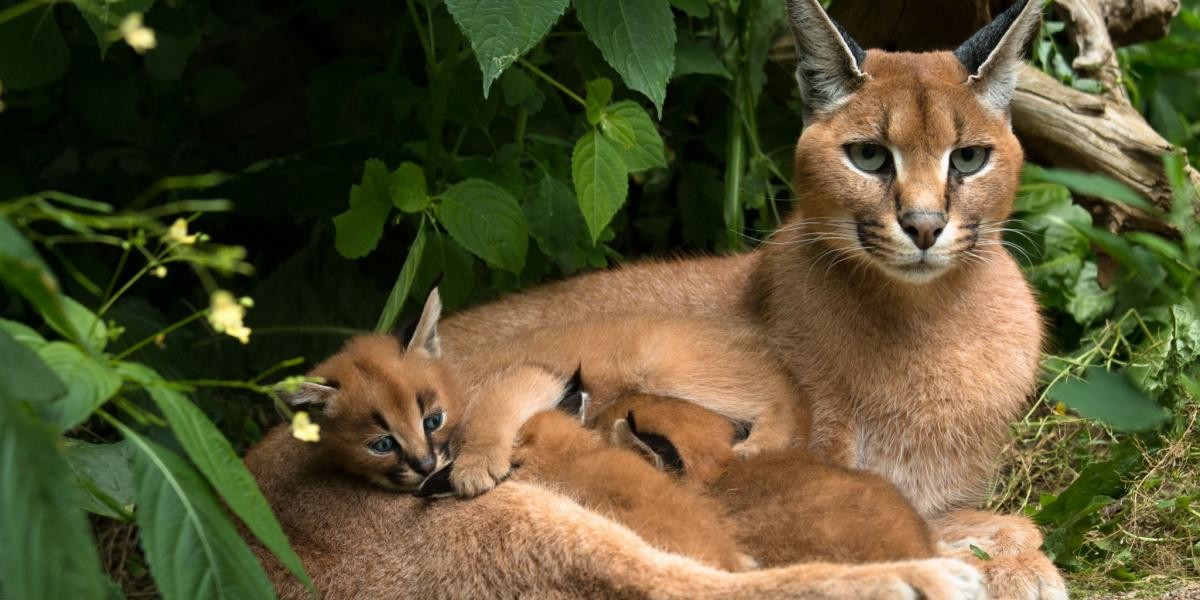
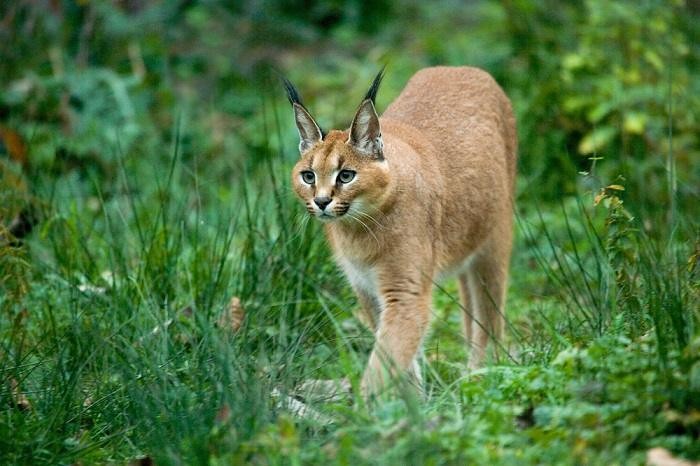

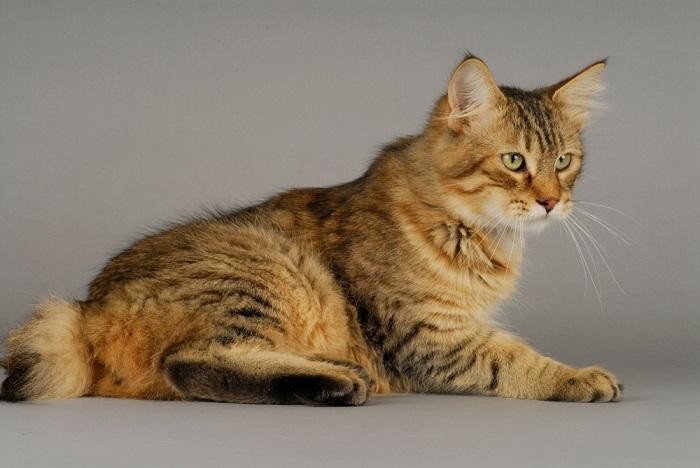
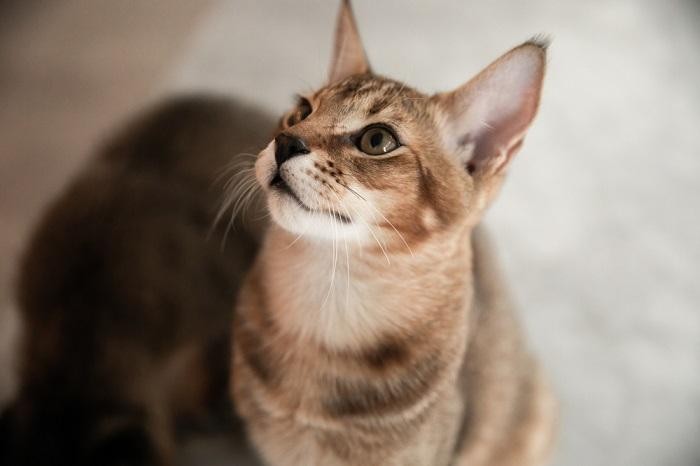
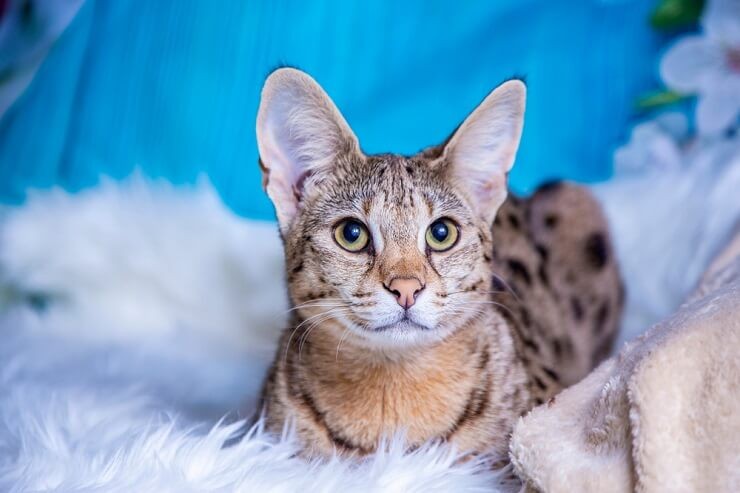
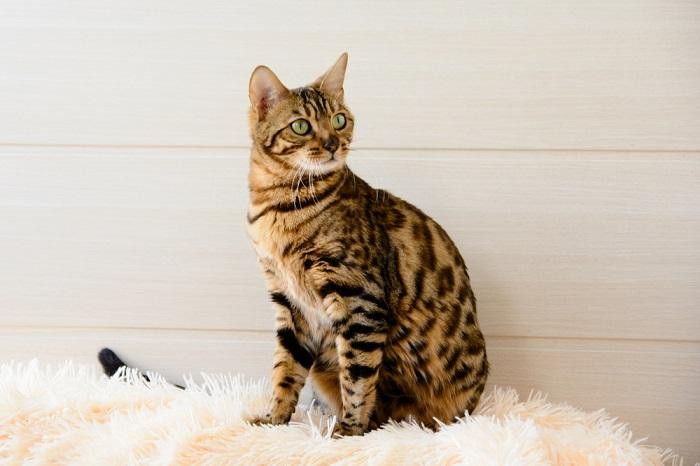

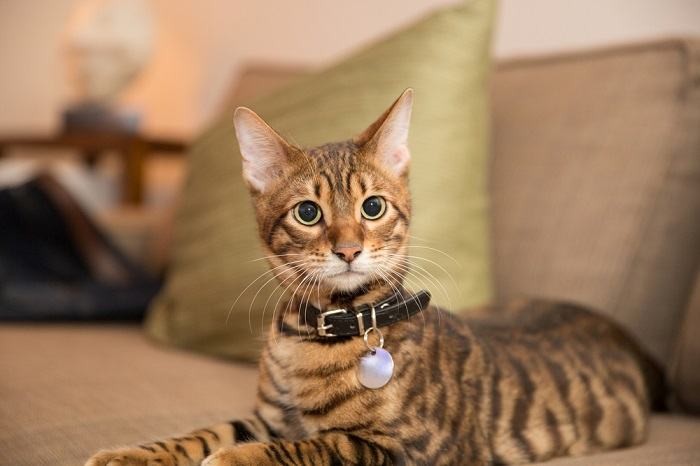
8. The Importance of Responsible Pet Ownership: Prioritizing Safety and Welfare
Responsible pet ownership is paramount, and it begins with selecting a pet that is well-suited to a domestic environment. PETS.EDU.VN advocates for informed decisions that prioritize the safety and welfare of both the animal and the owner. Choosing a domesticated breed ensures a harmonious and fulfilling relationship.
8.1 Choosing the Right Pet: Considerations Beyond Aesthetics
When selecting a pet, consider:
- Temperament: Ensure it aligns with your lifestyle and abilities.
- Needs: Understand the specific care requirements of the animal.
- Safety: Prioritize the safety of your family and other pets.
8.2 Supporting Ethical Breeding Practices: Promoting Animal Welfare
Support breeders who prioritize:
- Health: Genetic testing and health screenings.
- Temperament: Socialization and responsible breeding practices.
- Welfare: Providing a nurturing and stimulating environment.
9. Expert Opinions and Research: Backing Up the Claims
Numerous wildlife experts and organizations emphasize the dangers of keeping wild animals as pets. The Humane Society International states that wild animals have complex needs that cannot be met in a domestic environment. Research from universities, such as the University of California, Davis, confirms that exotic animals pose significant health and safety risks to humans.
9.1 Quotes from Experts: Highlighting the Risks
- “Wild animals are not pets. They belong in the wild, where they can live according to their natural instincts.” – Dr. Jane Goodall, Primatologist
- “Keeping wild animals as pets is cruel and dangerous. It puts both the animal and the public at risk.” – Humane Society International
9.2 Research Findings: Supporting the Evidence
- A study by the University of California, Davis found that exotic pets are more likely to transmit zoonotic diseases to humans.
- The American Veterinary Medical Association (AVMA) opposes the private ownership of exotic and wild animals.
10. Frequently Asked Questions: Addressing Common Concerns
10.1 Are caracals friendly to humans?
No, caracals are not naturally friendly to humans. In the wild, they are solitary animals that prefer to live alone, and even those raised in captivity retain wild instincts.
10.2 Is a caracal cat aggressive?
Yes, caracals can be aggressive, even those bred to be sold as pets. They retain their wild instincts and can be unpredictable and dangerous.
10.3 Can a caracal hurt you?
Yes, caracals can inflict serious injuries, especially to children and the elderly. They have sharp teeth and claws and can be aggressive if they feel threatened.
10.4 How much does a caracal cost?
Caracals can cost exorbitant amounts, but wildlife experts strongly advise against keeping them as pets, regardless of the cost.
10.5 What are the specific dietary needs of a caracal?
Caracals require a specialized, possibly raw, meat diet that is difficult and costly to source.
10.6 Is it legal to own a caracal in my state?
The legality of owning a caracal varies by state. Some states require special permits, while others ban ownership altogether.
10.7 Are there any ethical concerns with owning a caracal?
Yes, owning a caracal raises significant ethical concerns due to animal welfare issues and the potential risk to public safety.
10.8 What are some cat breeds that look like wild cats but are domesticated?
Some cat breeds that resemble wild cats include the Pixie-Bob, Chausie, Savannah, Bengal, Serengeti, and Toyger.
10.9 Can caracals be trained like domestic cats?
No, caracals are difficult to train and retain their wild instincts, making them unsuitable for domestic life.
10.10 What should I do if I encounter a caracal in the wild?
If you encounter a caracal in the wild, maintain a safe distance and do not approach it. Contact local wildlife authorities for assistance.
Conclusion: Making an Informed Decision
Choosing a pet is a significant decision that should be based on thorough research and a commitment to responsible pet ownership. While the allure of owning an exotic animal like a caracal may be tempting, it is crucial to consider the ethical, practical, and safety implications. PETS.EDU.VN encourages potential pet owners to prioritize the well-being of the animal and the safety of their community by selecting a domesticated breed that is well-suited to a domestic environment.
Explore PETS.EDU.VN for more resources and information on responsible pet ownership. If you’re passionate about exotic cat breeds, PETS.EDU.VN can help you find a breed that is right for you and your family.
For more information, contact us:
- Address: 789 Paw Lane, Petville, CA 91234, United States
- WhatsApp: +1 555-987-6543
- Website: pets.edu.vn
